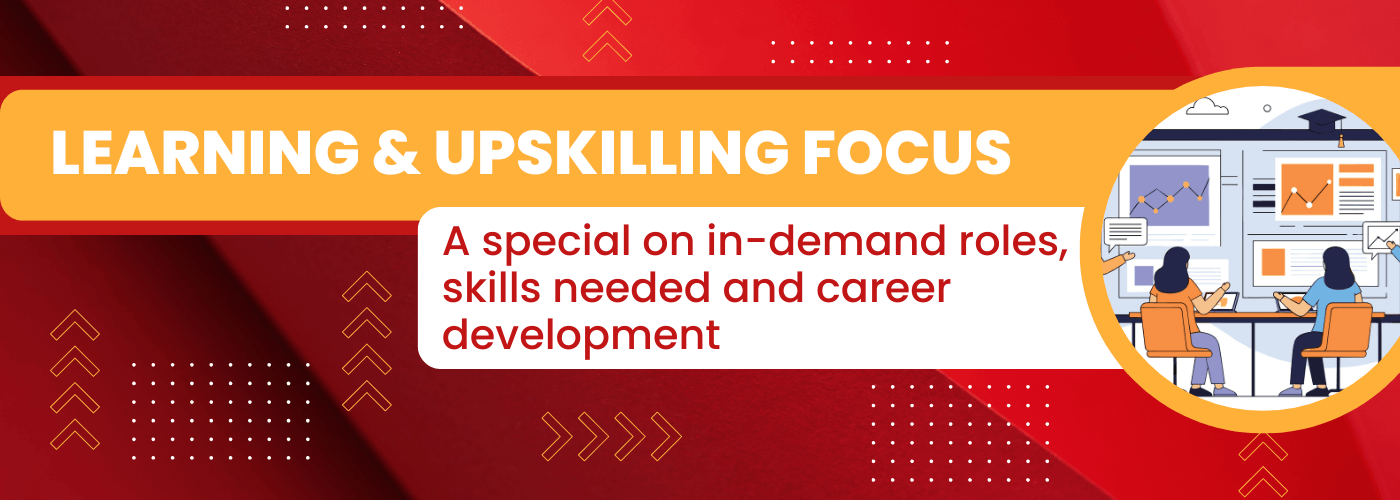Ali Bebo discusses current workplace upskilling and how organisations can overhaul old-fashioned training methods.
![]()
In the modern workplace, to truly stand head and shoulders above the competition, employees have to commit to a programme of consistent learning. A failure to upskill in emerging areas can result in a company losing out, not just in terms of profit, but also losing talented team members to organisations that have adapted and are now better positioned in a competitive space.
But if those systems of learning that you have in place are also failing to move with the times, then a strategy based on consistency likely won’t be of any use anyway. A problem Ali Bebo, the chief human resources officer at educational platform Pearson, explained is holding companies back.
“The way we expect people to learn at work is outdated,” Bebo told SiliconRepublic.com. “We’re using systems from eras ago, asking employees to absorb senior colleagues’ experience-based knowledge with no practical guidance, while those same employees are finding answers on TikTok and through AI chatbots.”
She explained as a society we have long moved on from apprenticeship models where career starters learned by shadowing more experienced employees, to a system where managers, who themselves are often untrained, are expected to coach others using what is frequently generic or unrelated content.
This fragmented approach, that breaks up the learning process, treating upskilling as a separate entity, rather than as an integral part of working life, compels the workforce to go elsewhere, outside of their organisation, to acquire the skills they need for their actual job.
This disconnect is becoming apparent in a number of ways and interestingly, is uniquely affecting the different factions of the workforce. For example, while mid-career professionals are often told to upskill for the future, they are frequently expected to absorb vague information from supervisors who also don’t know what the next year will bring.
In the meantime, they are finding AI assistants and online tools to be of greater value, compared to “internal programs that offer generic training sessions that don’t help them enumerate the skills they’ve acquired”.
In the case of younger employees, while they often enter the workforce armed with an arsenal of skills in areas such as AI, ML and advanced tools, they sometimes lack the interpersonal skills required to navigate a workspace that is moving offline and back into an office.
“But here’s the incredible opportunity I see,” stated Bebo. “Employees are showing us exactly what they need, immediate, relevant, task-specific help that fits into their workflow. That tells me we’re on the verge of a breakthrough in how learning can really work.”
Gut instinct or concrete certification?
The future of organisational learning has to happen at the core of how a company manages workflow, in a manner that is specific and measurable. She explained, we have the technology and insights to make this a reality, it is just a case of innovating for an evolving sector.
“One of my colleagues brought up the old paperclip assistant that would pop up when you were typing to offer help. Imagine if learning were bite-sized and just in the nick of time, just like that paperclip?”
Currently companies are relying on old-fashioned systems that depend on an employee’s gut instinct and their ability to pick up on senior level skills purely by observation and osmosis.
But the true issue with this is that, while you can mimic others and there is merit to leadership presence training, proficiency can be called into question.
Bebo clarified, “Someone who’s watched a few AI tutorials lists the same AI skills as someone with professional certification. Companies aren’t always savvy about distinguishing between ‘I’ve heard of this’ and ‘I can implement this in my role’.”
While gut instinct has its benefits, it is difficult to scale and can’t be accurately measured or improved systematically. Therefore, if your organisational training methods depend solely on instinct, you run the risk of perpetuating the same outdated expectations that depend on learning via work shadowing.
“When we rely on gut feelings, we’re essentially hoping people will figure things out on their own,” she explained.
“Evidence-based skill validation gives us concrete proof of what people can actually do. When learning is specific, measurable, and tied to real work challenges, people develop capabilities they can immediately apply and demonstrate. That’s how we move beyond gut instinct to systematic talent development.”
Ultimately, by moving away from outdated methods that can’t be quantified by real-world analytics or patterns, towards evidence-based skill validation, there is an opportunity for organisations and their teams to show their true potential, maximise results and advance professionally.
Don’t miss out on the knowledge you need to succeed. Sign up for the Daily Brief, Silicon Republic’s digest of need-to-know sci-tech news.
